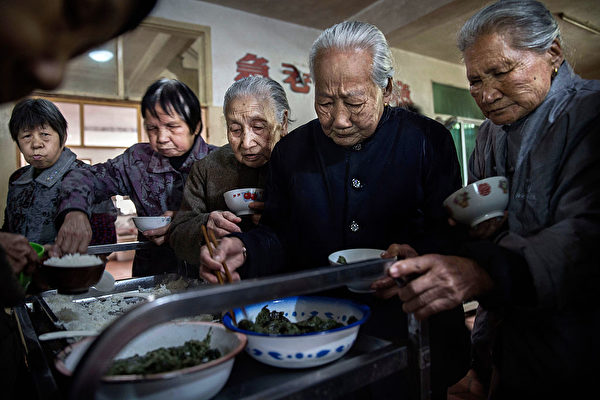China is the country with the largest elderly population in the world, with over 300 million senior citizens. Recent data indicates that last year, 20 provinces in China reached the threshold of moderate aging, while the northeastern region has entered a society characterized by “severe aging.”
According to the “China Statistical Yearbook 2025” published by the National Bureau of Statistics of China, information on the population aged 65 and over in 31 provinces and their respective proportions was made public.
As of the end of 2024, in 19 provinces including Liaoning, Shanghai, Jilin, Heilongjiang, Chongqing, Jiangsu, and Tianjin, the proportion of the population aged 65 and over exceeded 14%.
By international standards, a country is considered to have entered an “aging” society when the proportion of people aged 60 and over exceeds 10%, or when the proportion of people aged 65 and over exceeds 7%. When the proportion of people aged 65 and over reaches 14% to 21% of the total population, it is categorized as a moderately aging society, while exceeding 21% leads to classification as severely aging.
The “China Statistical Yearbook 2025” reveals that the northeastern provinces are regions with a high degree of aging. Among them, Liaoning is the most severely aged province, with over 9 million people aged 65 and over, accounting for 21.9% of the total population, indicating a severe aging trend.
Jilin and Heilongjiang both have proportions of 19.41%, ranking them as the third and fourth most moderately aging provinces.
In addition to the northeastern provinces, the top ten provinces with populations aged 65 and over also include eastern coastal provinces such as Shanghai and Jiangsu.
The “China Statistical Yearbook 2025” did not disclose information on the population aged 60 and over. However, compiled statistics from various sources reveal that in 2024, 20 provinces in China had a proportion of the population aged 60 and over exceeding 20%, which largely overlaps with the 19 provinces where the population aged 65 and over exceeds 14%.
In Gansu, the proportion of the population aged 60 and over is 20.06%, with 4.93 million people, while the proportion of the population aged 65 and over is 13.63%, with 3.35 million people.
Tibet has the lowest level of aging, with 240,000 people aged 65 and over, accounting for 6.29% of the total population.
Overall, China has fully entered an aging society.
By the end of 2024, the population aged 60 and over in the country reached 310 million, accounting for 22.0% of the total population, while the population aged 65 and over reached 220 million, accounting for 15.6% of the total population. Both proportions have reached historic highs.
Yang Chenggang, Vice President of the China Population Association, analyzed in a financial magazine that the aging trend in the northeast is mainly due to out-migration of the young population. Recent years have seen a significant decrease in population inflow to Shanghai and Jiangsu, leading to an increase in the degree of aging.
The “China Statistical Yearbook 2025” also revealed that in 2024, the elderly dependency ratio in China reached a historic high of 22.8%, meaning that approximately 4.35 working-age individuals support one elderly person.
According to the China Population and Development Research Center, from 2025 to 2030, the population aged 60 and over will experience rapid growth, increasing from 320 million to 390 million, with a net annual increase of 13.09 million people and an annual growth rate accelerating to 3.7%. The aging rate is projected to increase from 22.8% to 27.7%.
Moreover, the population of elderly individuals aged 60 to 69 is expected to rise from 170 million to 210 million, maintaining a share of around 57% of the elderly population.
Chinese issues expert Wang He analyzed that the aging of the Chinese population is a long-term factor constraining China’s economic development. However, the aging of China’s population is not a result of natural demographic evolution but rather the consequence of the Communist Party’s “one-child policy.” The Party’s family planning policies have caused immense and far-reaching disasters for China.
From 1953 to 1982, over a span of 29 years, the proportion of the population aged 65 and over in China only increased from 4.4% to 4.9%. However, after the Communist Party began implementing the “one-child policy” in 1979, the proportion of the elderly population rapidly surged, reaching 7.0% by 2000, leading to a mildly aging society.
Wang He pointed out that the extreme social control imposed by the Communist Party, depriving the people of their reproductive rights, has resulted in highly skewed population structure, including the current rapid aging process. The consequences of this are not something that can be remedied within a generation.

